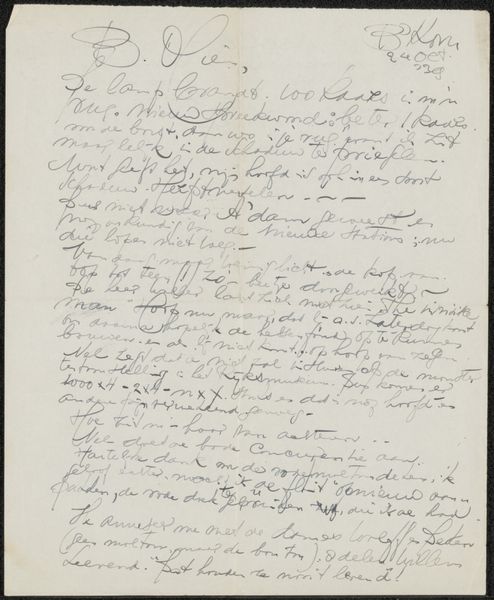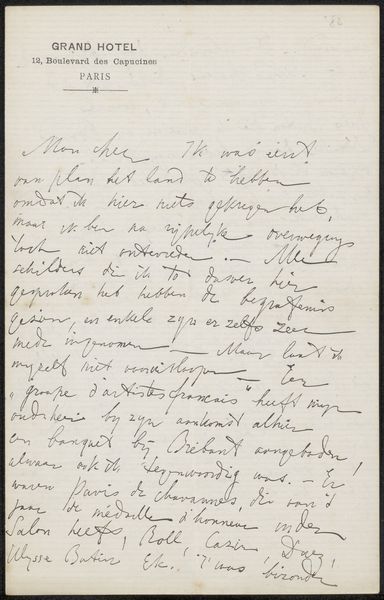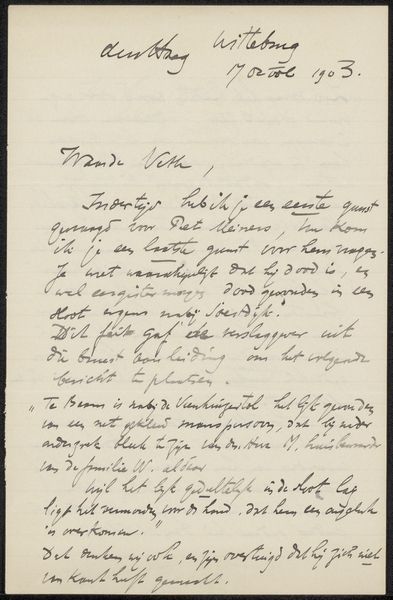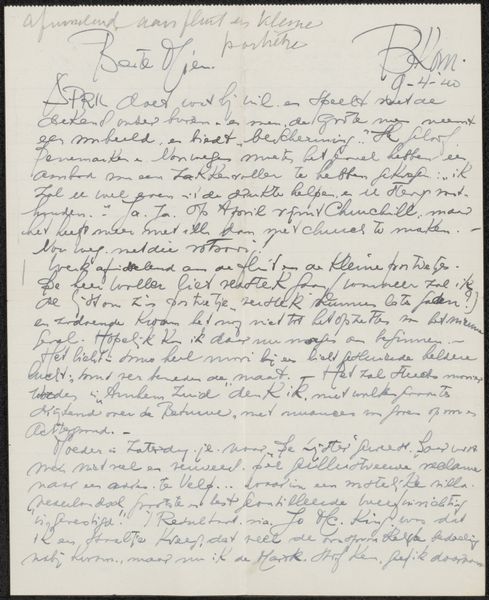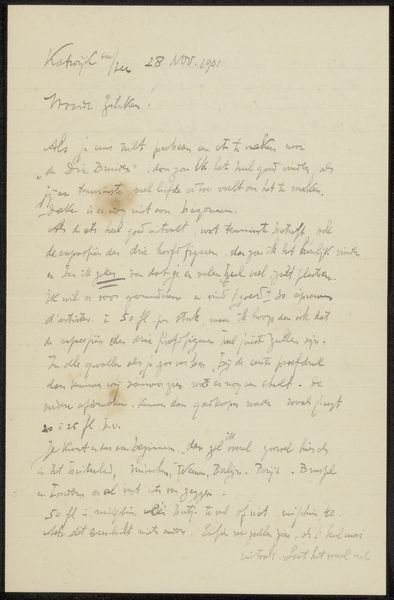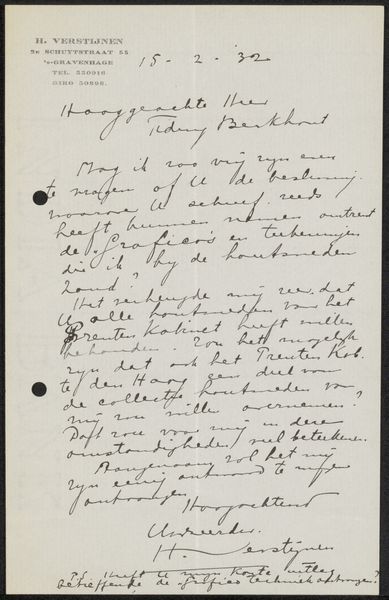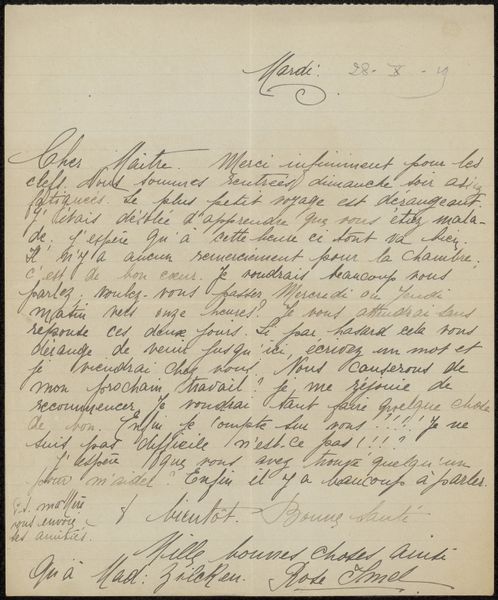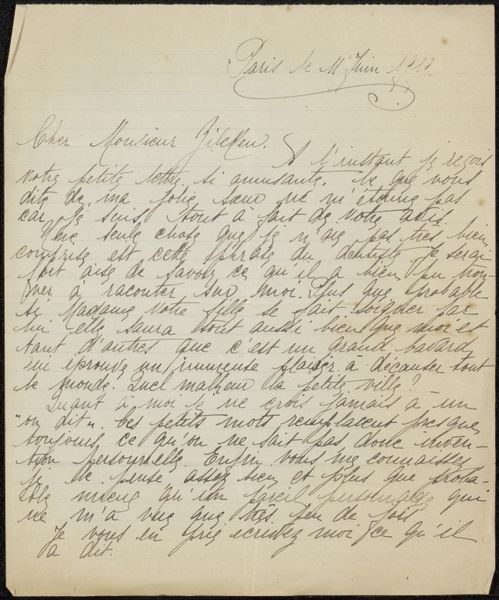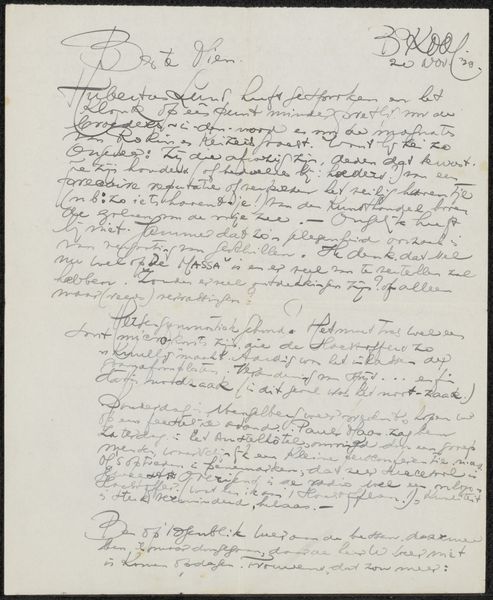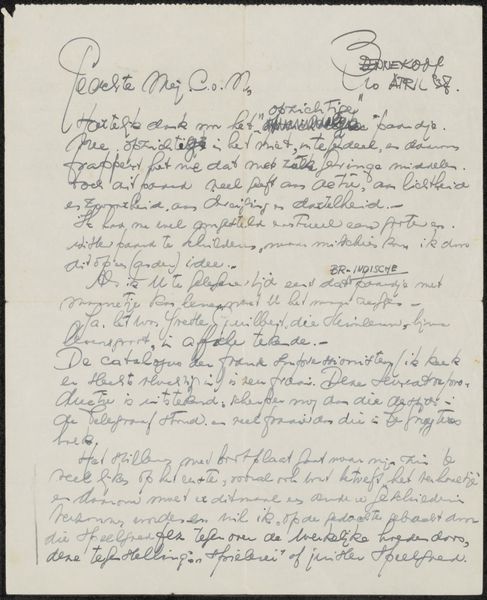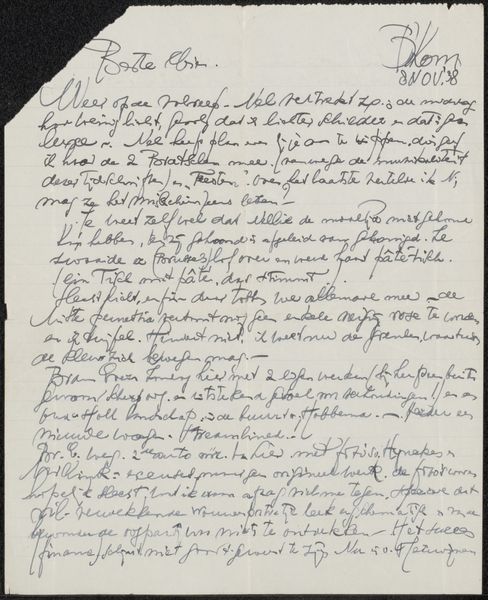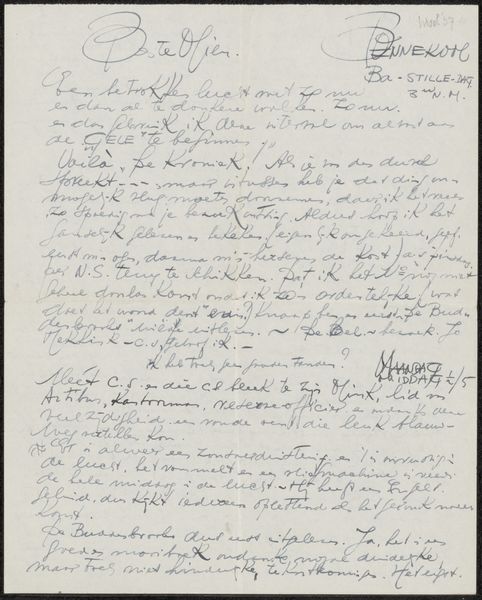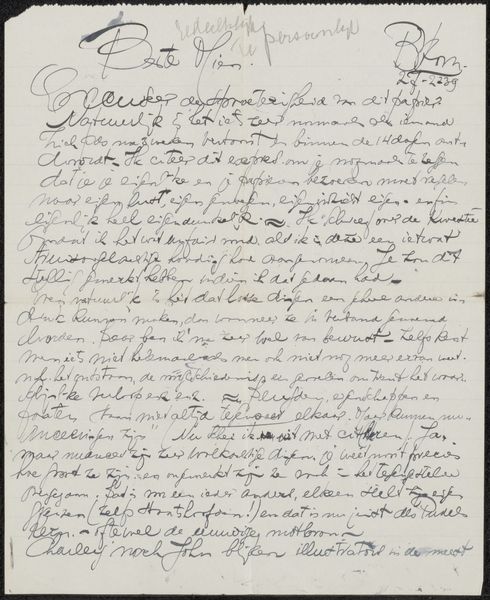
print, photography
#
pictorialism
# print
#
photography
Dimensions: height 256 mm, width 206 mm
Copyright: Rijks Museum: Open Domain
Editor: Here we have "Brief aan Jimmy (James)," a photograph, likely a print of a photograph, by Peter Henry Emerson. It's dated possibly between 1890 and 1898. Looking at it, I'm struck by the intimacy of the handwriting and the glimpse it offers into the artist's thoughts. What can you tell me about this piece? Curator: This image presents us with a fascinating intersection of photography and text, serving as a window into Emerson's world and his relationships. Let’s consider the context. Emerson was a key figure in pictorialism, which fought for photography to be recognized as art. How does seeing this letter – a personal communication – within that struggle for artistic recognition shift your perspective? Editor: That’s interesting! It does make me wonder about his intentions… Was this letter always meant to be seen, to be art? Curator: Exactly! It raises questions about intentionality, the boundaries between the private and the public, and the construction of the artist’s persona. Consider also the materiality: a photograph *of* a letter. What does that layering of media accomplish? What statements about representation and authenticity are being made? Editor: It's like he's saying the content of the letter is almost secondary – that the beauty is in the form and presentation. Curator: Precisely. This piece engages with broader conversations about photography’s ability to capture not just a visual likeness but also emotion, intimacy, and the essence of human connection. Editor: So, by photographing a personal letter, Emerson elevates it, almost like an artistic performance or statement about self. Curator: Exactly. It asks us to examine the socio-political dimensions embedded in even the most seemingly personal forms of communication and artmaking, how class and education may even play a part in accessibility. It speaks to the construction of the self in the late 19th century, particularly the artistic self. Editor: I didn’t expect a letter to open up so many ideas. It's definitely made me think about photography, privacy, and the artist's role in a whole new way. Curator: And that's the power of art, isn't it? To challenge our assumptions and invite us to see the world through a different lens, literally and figuratively.
Comments
No comments
Be the first to comment and join the conversation on the ultimate creative platform.
